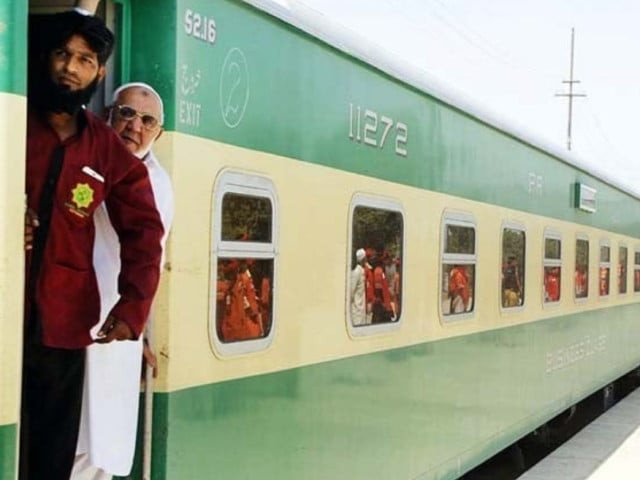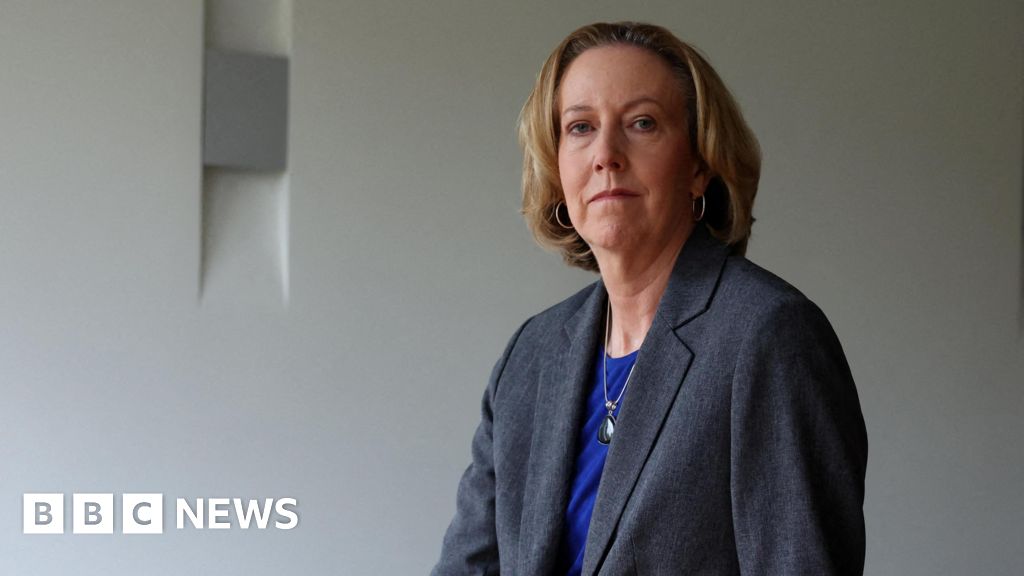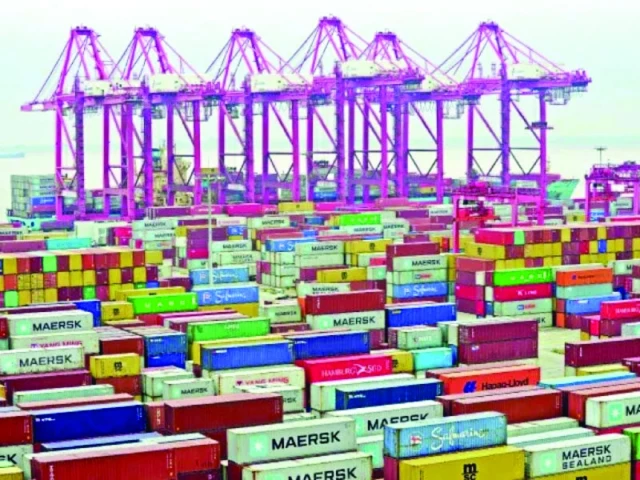Business
ADB investment puts Pakistan Railways back on track | The Express Tribune

KARACHI:
Pakistan’s railway sector, long described as the backbone of national connectivity, is again moving to the forefront of policy debates as the government turns to the Asian Development Bank (ADB) for support.
Years of underinvestment, safety lapses, and the stalling of promised Chinese funds have left Pakistan Railways in a precarious state, forcing policymakers to look elsewhere. Officials confirm that Islamabad is seeking a $2 billion package from the ADB to begin long-awaited modernisation works, most notably on the Karachi-to-Peshawar Main Line-1 (ML-1) route.
The development comes at a time when fiscal pressures, declining freight revenues, and growing competition from road transport have left the railways struggling to perform their role as a cost-effective logistics provider.
Once considered a symbol of national pride, Pakistan Railways now carries around 70 million passengers annually but operates on outdated tracks and antiquated signaling systems. The freight side of operations, which used to generate the bulk of revenue in the 1960s, has collapsed to less than a tenth of overall business, pushing industry and traders onto highways.
This shift has come at a steep cost: logistics expenses in Pakistan are estimated to be about 35% higher than the South Asian regional average, eroding export competitiveness and putting pressure on sectors such as textiles and agriculture. The decaying system has also reduced safety, with derailments and breakdowns becoming more common, further weakening public trust in rail travel.
The ML-1 project has been on the table for years under the China-Pakistan Economic Corridor (CPEC), initially tagged at $6.8 billion but now estimated to exceed $9 billion due to repeated delays and cost escalations. China had long been expected to bankroll the project as part of its Belt and Road Initiative, but its disbursements have slowed dramatically amid Pakistan’s worsening fiscal situation and Beijing’s own economic recalibrations.
The ADB’s decision to intervene, therefore, represents more than just a financial transaction. It reflects Islamabad’s growing reliance on multilateral lenders at a time when bilateral commitments have become uncertain. Analysts suggest the shift also diversifies Pakistan’s options and reduces overdependence on a single source of funding.
The proposed ADB package would target three areas: rehabilitation of ML-1 to allow faster and safer travel, development of a dedicated freight corridor to take pressure off highways, and the introduction of digital systems to monitor and secure railway operations. If executed properly, these changes could enable passenger trains to run at up to 160 kilometres per hour, cut travel time on key routes nearly by half, and encourage a revival of rail-based logistics.
Exporters, especially in the textile sector that accounts for nearly 60% of Pakistan’s exports, see in this a chance to reduce delays and cut costs associated with moving goods to Karachi Port. Improved connectivity between port cities and inland hubs such as Faisalabad and Multan could also enhance Pakistan’s role as a trade corridor linking South Asia with Central Asia.
Economists argue that the benefits go far beyond efficiency. Infrastructure investment of this scale has a multiplier effect, which generates tens of thousands of construction jobs and stimulates industries such as steel, cement, and services. A stronger railway backbone would also reduce the environmental toll of excessive trucking, lowering fuel consumption and emissions.
In a country where energy imports weigh heavily on the balance of payments, the savings could be significant. For passengers, meanwhile, modernised trains and safer systems would restore confidence in a service many have abandoned in favour of buses or private transport.
Pakistan’s external debt now exceeds $130 billion, much of it owed to multilateral lenders, and the repayment capacity remains a concern. While ADB loans are typically concessional, offering softer terms than commercial borrowing, they still require discipline in implementation.
Critics note that past railway projects have often been marred by inefficiency, corruption, and bureaucratic inertia. Without proper oversight and reform, there is a risk that even low-cost financing could add to the country’s debt burden without delivering transformative results. Transparency advocates are calling for the independent monitoring of funds to ensure they are not wasted.
China’s sidelined role also adds a geopolitical dimension. Over the past decade, Beijing has invested more than $25 billion in Pakistan, largely in energy and infrastructure, but its pace of financing has slowed markedly. Analysts attribute this partly to Pakistan’s fragile fiscal position, which increases repayment risks, and partly to China’s shifting global priorities as its own economy faces headwinds.
Some experts argue that China has not abandoned CPEC altogether but is recalibrating its involvement, focusing on selective projects while encouraging Pakistan to diversify its financing sources. In this context, the ADB’s re-emergence as a key financier could be seen less as a replacement and more as a complement to future Chinese investments.
There are lessons to draw. Bangladesh and India have both secured ADB support for rail and metro upgrades, with visible success in enhancing efficiency and safety. Pakistan has lagged behind, partly because of political instability and partly due to a centralised management structure that has resisted reform.
The ADB’s involvement might serve as leverage for Islamabad to introduce governance changes, open space for private sector participation, and embrace technology-driven solutions. Without such reforms, financial injections alone may not lead to the desired turnaround.
The writer is a member of PEC and holds a Master’s in Engineering
Business
Tariff jitters: US consumer confidence slips in December; inflation and jobs worries deepen – The Times of India

US consumer confidence weakened in December, sliding to its lowest level since President Donald Trump rolled out sweeping tariffs earlier this year, as households grew more anxious about high prices, trade levies and job prospects, according to a survey by the Conference Board.The Conference Board said its consumer confidence index fell 3.8 points to 89.1 in December from an upwardly revised 92.9 in November, AP reported. The reading is close to the 85.7 level recorded in April, when the Trump administration introduced import taxes on key US trading partners, AP reported.Consumers’ assessment of current economic conditions saw a sharper drop. The present situation index fell 9.5 points to 116.8, reflecting growing unease about inflation and employment conditions. Write-in responses to the survey showed that prices and inflation remained the biggest concern for consumers, alongside tariffs.Short-term expectations for income, business conditions and the labour market were little changed at 70.7, but remained well below 80 — a threshold that can signal a recession ahead. This was the 11th straight month that expectations stayed under that level.Perceptions of the job market also weakened. The share of consumers who said jobs were “plentiful” fell to 26.7% in December from 28.2% in November, while those who said jobs were “hard to get” rose to 20.8% from 20.1%.The softer sentiment follows recent labour market data showing mixed signals. Government figures released last week showed the US economy added 64,000 jobs in November after losing 105,000 jobs in October. The unemployment rate climbed to 4.6% last month, its highest level since 2021.Economists say the labour market is stuck in a “low hire, low fire” phase, as companies remain cautious amid uncertainty over tariffs and the lingering effects of high interest rates. Since March, average monthly job creation has slowed to about 35,000, down from 71,000 in the year ended March. Federal Reserve chair Jerome Powell has said he suspects those figures could be revised even lower, AP reported.
Business
Government waters down farm inheritance tax plan

Kate WhannelPolitical reporter
 PA Media
PA MediaGovernment proposals to tax inherited farmland have been watered down, with the planned threshold increasing from £1m to £2.5m.
The climbdown follows months of protests by farmers and concern from some Labour backbenchers.
At last year’s Budget, ministers said they would start imposing a 20% tax on inherited agricultural assets worth more than £1m from April 2026, ending the 100% tax relief that had been in place since the 1980s.
In an announcement put out after MPs had left Parliament for the Christmas recess, Environment Secretary Emma Reynolds said: “We have listened closely to farmers across the country and we are making changes today to protect more ordinary family farms.”
“It’s only right that larger estates contribute more, while we back the farms and trading businesses that are the backbone of Britain’s rural communities, ” she said.
Head of the National Farmers’ Union Tom Bradshaw welcomed the change, telling BBC Radio 5 Live it “takes out many family farms from the eye of a pernicious storm”.
Gavin Lane, president of the Country Land and Business Association, said: “The government deserves credit for recognising the flaws in the original policy and changing course.
“However, this announcement only limits the damage – it doesn’t eradicate it entirely.
“Many family businesses will own enough expensive machinery and land to be valued above the threshold, yet still operate on such narrow profit margins that this tax burden remains unaffordable.”
Ben Ardern, a farmer from Derbyshire, told the BBC said it was “a step in the right direction”.
He said the government should “drop it [the tax] for family farms… and just tax the people who have got the money to tax.
“The big corporations who have just buried money into land – they’re not farmers, they have just done it to avoid tax. Farmers haven’t bought land to avoid tax, we’ve bought land to farm it and grow food.”

In the 14 months since the initial proposal was announced, there have been regular protests by farmers outside Parliament.
Some Labour MPs in rural areas have also expressed concern. At a recent parliamentary vote on the plan, a dozen backbenchers abstained and one, Markus Campbell-Savours, voted against.
Campbell-Savours was subsequently suspended for voting against the government, meaning he now sits as an independent MP.
Conservative leader Kemi Badenoch said in a post on social media: “This fight isn’t finished.
“Other family businesses are still affected by Labour’s tax raid, and we will keep pushing until the tax is lifted from them too.”
Liberal Democrat spokesperson Tim Farron MP said: “It is utterly inexcusable that family farmers have been put through over a year of uncertainty and anguish since the government first announced these changes.
“We demand that the government scraps this unfair tax in full and if they refuse to, Liberal Democrats will submit amendments in the new year to bring it down.”
Reform UK deputy leader Richard Tice said: “This cynical climbdown – whilst better than nothing – does little to address the year of anxiety that farmers have faced in planning to protect their livelihoods… with British agriculture hanging by a thread, the government must go further and abolish this callous farms tax.”
In her first Budget in 2024, Chancellor Rachel Reeves announced she would be reversing the 100% inheritance tax relief on agricultural assets that had been in place since the 1980s.
The move would have seen inherited agricultural assets worth over £1m taxed at 20%, half the standard inheritance tax rate, raising an estimated £520m annually by 2029.
The government had argued that the change would protect smaller farms while stopping wealthy investors from buying farmland as a tax loophole.
However, it has now stepped back from the original proposal raising the threshold level to £2.5m.
Coupled with an exemption which allows farmers to pass on assets to their spouses tax-free, this new government concession means a couple could pass on up to £5m in qualifying assets, without paying tax.
Above the threshold, a 50% relief will be applied to the remaining assets.
According to the government, the number of estates in the UK expected to pay more inheritance tax in 2026/27 will be reduced from around 2,000 under the original plans to 1,100 under the new proposal.
The climbdown is the latest in a series of U-turns the government has made since being elected in July 2024.
Earlier this year the government eased cuts to winter fuel payments and backtracked on plans to make £5bn of cuts to the welfare bill.
Business
US economy grows at fastest pace in two years

The US economy picked up speed over the three months to September, as consumer spending jumped and exports increased.
The world’s largest economy expanded at an annual rate of 4.3%, up from 3.8% in the previous quarter. That was better than expected, and marked the strongest growth in two years.
The figures offer a clearer picture of the state of the US economy heading into the end of the year, after data collection had been delayed by the US government shutdown.
The report showed consumer spending rising by 3.5%, compared with 2.5% in the previous quarter.
-

 Business1 week ago
Business1 week agoStudying Abroad Is Costly, But Not Impossible: Experts On Smarter Financial Planning
-

 Fashion5 days ago
Fashion5 days agoIndonesia’s thrift surge fuels waste and textile industry woes
-

 Business1 week ago
Business1 week agoKSE-100 index gains 876 points amid cut in policy rate | The Express Tribune
-

 Sports1 week ago
Sports1 week agoJets defensive lineman rips NFL officials after ejection vs Jaguars
-

 Business5 days ago
Business5 days agoBP names new boss as current CEO leaves after less than two years
-

 Entertainment1 week ago
Entertainment1 week agoPrince Harry, Meghan Markle’s 2025 Christmas card: A shift in strategy
-

 Tech5 days ago
Tech5 days agoT-Mobile Business Internet and Phone Deals
-

 Sports5 days ago
Sports5 days agoPKF summons meeting after Pakistani player represents India in kabaddi tournament










